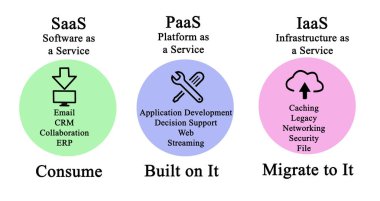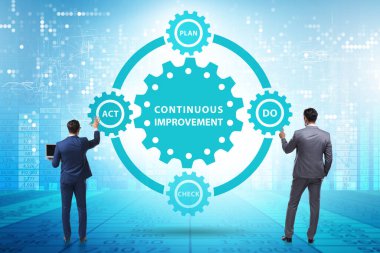SaaS and PaaS: The Future of Product Delivery

In an era defined by digital transformation, businesses are shifting how they deliver products and services to meet customer expectations. Among the key enablers of this shift are Software as a Service (SaaS) and Platform as a Service (PaaS) models, which provide faster, more scalable, and efficient ways to deploy solutions. These cloud-based models are transforming the landscape of product delivery, enabling businesses to launch new products with reduced time to market and increased flexibility.
In this blog, we will explore how SaaS and PaaS are accelerating product delivery and outline best practices for building and managing these types of cloud-based solutions.
The Rise of SaaS and PaaS in Product Delivery
Software as a Service (SaaS) is a cloud-based model that provides software applications over the internet. Instead of purchasing and installing software on individual systems, users can access SaaS applications via a web browser, streamlining both deployment and updates. Popular SaaS examples include platforms like Salesforce, Slack, and Google Workspace.
On the other hand, Platform as a Service (PaaS) provides a cloud-based platform for developers to build, deploy, and manage applications without worrying about the underlying infrastructure. PaaS solutions like AWS Elastic Beanstalk, Google Cloud Platform (GCP), and Microsoft Azure provide the tools and services developers need to accelerate application development and deployment.
Both SaaS and PaaS models remove the need for complex infrastructure management, allowing businesses to focus on delivering innovation and customer value faster.
How SaaS and PaaS Accelerate Product Delivery
There are several ways in which SaaS and PaaS models speed up the product development and delivery process:
1. Rapid Deployment and Scaling: One of the most significant advantages of SaaS and PaaS is their ability to rapidly deploy and scale applications. SaaS products are ready to use as soon as they’re deployed, requiring no lengthy installation or configuration processes. This is especially valuable for businesses needing to scale quickly and cater to large user bases.
Similarly, PaaS platforms allow developers to focus on writing code and building features while the platform handles scalability, infrastructure, and updates. The ability to automatically scale resources based on demand ensures that applications remain performant without manual intervention.
2. Continuous Updates and Maintenance: With SaaS, updates are pushed automatically from the cloud, so users always have access to the latest features and security patches without having to install updates manually. This model eliminates downtime during updates, ensuring customers benefit from continuous innovation.
In the case of PaaS, developers can build and deploy applications with Continuous Integration/Continuous Delivery (CI/CD) pipelines, streamlining testing, updates, and releases. This allows for faster iteration and enables businesses to rapidly deliver new features or fixes without disrupting the user experience.
3. Cost Efficiency: Both SaaS and PaaS models provide cost-efficient ways to deliver products by eliminating the need for businesses to invest in expensive hardware and infrastructure. SaaS users pay a subscription fee based on usage, which can scale with the business, avoiding upfront costs.
With PaaS, developers only pay for the resources they consume, reducing the complexity of managing infrastructure and enabling cost savings on hardware and system maintenance. This pay-as-you-go model allows businesses to stay agile, especially during periods of growth or fluctuating demand.
4. Enhanced Collaboration and Flexibility: SaaS tools are accessible from any device with an internet connection, fostering real-time collaboration across teams and geographies. This flexibility enables remote teams to work together seamlessly and ensures that everyone has access to the same version of the software.
PaaS platforms, on the other hand, provide developer-friendly environments where teams can collaborate on building, testing, and deploying applications in the cloud. Shared development environments, standardized tools, and integrated workflows all contribute to faster product iteration and improved team efficiency.
Best Practices for Building and Managing SaaS/PaaS Products
Successfully building and managing SaaS and PaaS products requires thoughtful planning and execution. Here are best practices to follow:
1. Focus on Scalability from the Start: Building scalable SaaS or PaaS products is critical to handling user growth and fluctuating demands. When designing your architecture, leverage cloud-native technologies such as containerization with Docker and orchestration tools like Kubernetes. These tools help you scale your applications seamlessly, ensuring that your product can grow with your business.
Additionally, for PaaS platforms, it’s essential to use API-driven architectures that allow developers to integrate and extend platform functionality with ease. This ensures that your product can evolve as the needs of your users change.
2. Prioritize Security and Compliance: As cloud-based solutions, SaaS and PaaS products must be designed with security and data privacy in mind. Implement strong security measures such as data encryption, multi-factor authentication (MFA), and regular vulnerability assessments to protect user data. Compliance with industry regulations such as GDPR or HIPAA is also critical for building customer trust.
3. Build with the User in Mind: Automating security checks during development and deployment with tools like Snyk or SonarQube can help prevent vulnerabilities from reaching production.
To succeed in the competitive SaaS and PaaS markets, businesses must prioritize customer experience. For SaaS, building a user-friendly interface with intuitive workflows will ensure that customers can get the most out of your product. Additionally, consider offering personalized onboarding and tutorials to guide new users.
For PaaS, focus on providing developer-centric tools and APIs that streamline the development process. Offering clear documentation, integration support, and debugging tools will make it easier for developers to adopt and work within your platform.
4. Use Metrics for Continuous Improvement: SaaS and PaaS products should be built with analytics and user feedback loops to measure performance and user satisfaction. Continuously monitor key metrics such as uptime, response times, and user behavior to identify areas for improvement. For PaaS, monitoring tools such as Prometheus and Grafana can provide real-time insights into system health and performance.
Utilizing these metrics enables proactive adjustments and helps identify new opportunities for product innovation and optimization.
Conclusion
SaaS and PaaS are revolutionizing how businesses deliver products by providing fast, scalable, and cost-effective solutions. The flexibility and continuous innovation enabled by these models allow enterprises to meet growing customer demands without being constrained by traditional infrastructure or lengthy development cycles.
By following best practices such as building scalable architectures, focusing on security, and ensuring a seamless user experience, companies can successfully leverage SaaS and PaaS to accelerate their product delivery and stay ahead in a competitive market.
At Raphus Solutions, we are committed to helping businesses harness the power of cloud-based models like SaaS and PaaS to build scalable, innovative, and efficient products that align with their digital acceleration journey. Together, we can drive growth and efficiency through the power of the cloud.




